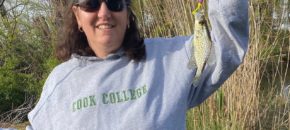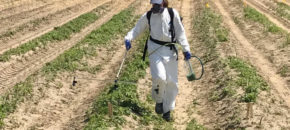From C-FARE, the Council on Food, Agricultural and Resource Economics — Whether you registered and were told this webinar was full on Friday, or just couldn’t make it then but are still interested in the topic, the sponsors of E-Commerce During COVID-19: Opportunities for Food Producers to Make Direct Market Sales Online apologized for the […]
Continue reading...Dealing with Stress on the Farm During Trying Times

This is a stressful time for many people in our country and especially on the farm. With constant updates from government officials and media sharing new about the pandemic and the fear of the unknown for the future, it is understandable to feel overwhelmed, stressed and anxious. Seeing other farmers around the nation struggling with […]
Continue reading...Chemical Alternative Options to Paraquat for Weed Control in Vegetable Crops

Paraquat is an herbicide labeled on various crops species for row middles applications. However, with new paraquat use restrictions in place, vegetable growers may be interested by other herbicide options available for controlling emerged weed seedlings. Paraquat controls numerous annual grasses and broadleaf weeds seedlings by inhibiting plant photosynthesis. Its acts quickly by contact when […]
Continue reading...“Buy Fresh” USDA Coronavirus Farm Assistance Program (CFAP) Announcement of Solicitation
Just in from the United Fresh Produce Association: The U.S. Department of Agriculture (USDA) Agricultural Marketing Service (AMS) today released its solicitation for proposals for the “Buy Fresh” Coronavirus Farm Assistance Program (CFAP) to purchase and distribute $100 million a month of fresh fruit and vegetables for approximately six months. USDA will award contracts for […]
Continue reading...U-Pick Operation Guidelines under COVID-19

The CDC, FDA and USDA have no reports at this time of human illnesses that suggest coronavirus can be transmitted by food or food packaging. U-Pick operations are unique with customers going out into the field to do their own harvesting. This creates special situations for the grower and customer. How do you protect the […]
Continue reading...Face Coverings and Gloves Required in Packinghouses
The Executive Order 122 “Requires workers and visitors to wear cloth face coverings, in accordance with CDC recommendations, while on the premises, except where doing so would inhibit the individual’s health or the individual is under two years of age, and require workers to wear gloves while on the premises. Businesses must provide, at their […]
Continue reading...